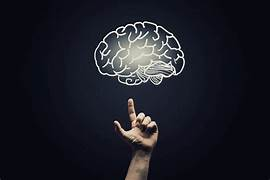Genre Research: Mystery
After researching the mystery genre, we were able to pick up on a couple consistencies throughout the genre as a whole.
Common CAMS
Angles
Low-Angle Views: Exudes a feeling of dominance or authority.
Usually employed to unveil a crucial component in a mysterious setting or to introduce a formidable adversary.
High Angle: Makes one susceptible or helpless.
Frequently used to illustrate a character's fragility or loneliness, or to depict their response to an enigmatic incident.
Transverse-Shoulder Views: Offers a sense of involvement by placing the viewer in a character's shoes.
Frequently employed in conversation sequences, detective stories, or in situations where characters are finding hints.
Movements
Pan: From a stationary position, the camera swivels horizontally.
For scanning a scene, illuminating features, or tracking characters as they navigate an area.
Slant: A vertical axis is used to move the camera up or down.
When revealing vertical components in a scene, such a towering skyscraper or a hidden object, this technique is utilized.
Enlarge: To move the subject closer or farther away, the camera lens is adjusted.
Employed to draw attention to specific details or to highlight a specific object or character.
Shots
Up close: Emphasizes particular phrases or facts.
Employed to draw attention to important details such as expressions on faces, items, or hints.
Abrupt Close-Up: Highlights minute details.
Applicable when there is a strong emphasis on minute but noteworthy details—often crucial hints.
Long Shot: Provides context by showcasing the subject from a distance.
To highlight the larger setting and the interactions between the characters and their surroundings.
Common CLAMPS
Outfits: Detective Attire: The lead detective or investigator may dress in a way that makes their outfit instantly recognizable.
Disguises: Characters can blend in with particular environments or hide their true identities by donning costumes.
Lighting: Low-Key Lighting: Adds a feeling of mystery and suspense by contrasting objects and casting shadows. Spotlighting is the technique of drawing the audience's attention to significant items or persons.
Performing: Subtle Expressions: To keep the audience wondering about the motivations of their characters, actors may use subtle expressions of emotion. Misdirection: To maintain the mystery, performances may purposefully use misdirection.
Make-up: Disguises and Transformations: A character's appearance can be altered with makeup, which adds suspense to a story. Makeup can mimic the symptoms of aging or physical injury, providing hints or background information.
Props: Mysterious Objects: Red herrings and clues are examples of props. Conventional mystery pieces including forensic tools, notebooks, and magnifying glasses.
Unidentified Places: These could be secluded areas, deserted buildings, or dimly lit lanes. Using historical locales or focusing on particular eras can heighten the mystery.
Common editing includes:
Montage: The goal is to condense time or information by showing several short clips. Frequently employed to illustrate the passage of time during an inquiry or to portray the mental state of a character.
Parallel editing, or cross-cutting: Switches back and forth between two or more distinct scenes or narratives. Creates tension by contrasting disparate occurrences or points of view, building suspense for a turning point.
Stopping Action: Editing a scenario amid a physical event is the goal. Improves a scene's coherence and flow, giving the action a smooth appearance.
Common sounds include:
Tense Music: Creates suspense and expectation. Played as a backdrop to set a spooky mood or during pivotal events or investigations.
Tense string accompaniment: Instills a feeling of discomfort. Frequently employed in situations where tension is raised, or enigmatic happenings take place.
Strings plucking and piano: Establishes an air of mystery and cryptic tone. Frequently employed to arouse curiosity in detective or investigative scenarios.
Films like "Gone Girl", "Erased" and "Knives Out" do a good job of following these consistencies.
I really enjoy the flashy and hard-to-understand aspect as things like flashbacks and periods tend to add depth and deeper understanding to the world around the film. Other weaker elements I don't find appealing are how convoluted it can become if not handled right.




Comments
Post a Comment